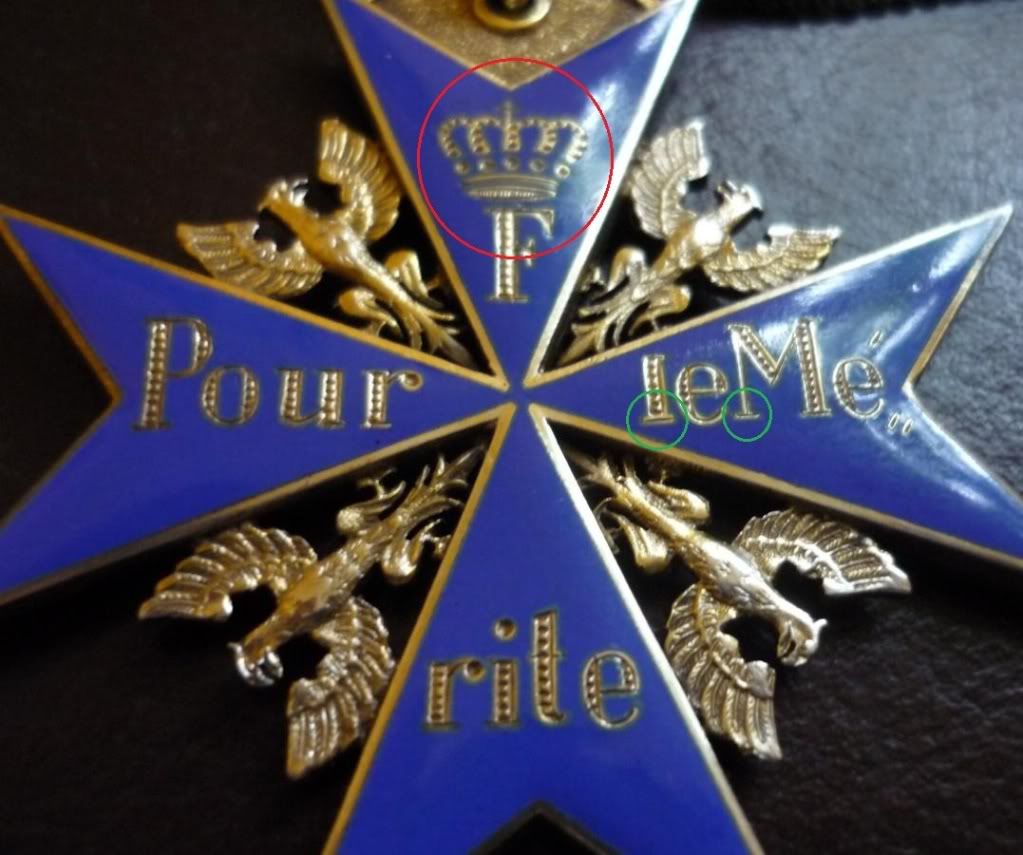Hello,
I am a collector of imperial Austrian orders & decorations, so the name of Rothe & Neffe is fairly well known to me.
They were official producers of orders and decorations to the Imperial Austrian Court and to many foreign courts and governments.
In my collection, I have (or had) orders -made by Rothe- from Vatican, Persia, Turkey, Mexico, etc., all made before 1918.
During the decades of the Austro-Hungarian monarchy, they also made orders of the former German states, including the PLM: of course, they have to be considered as private purchase pieces, not being "Probemässig" to the official German production.
They of course cannot be considered as "copies" or "forgeries".
Rothe & Neffe continued the production until the 70s of 20th Century, although the quality of finish had a visible decay.
Very old Rothe-made PLMs are very well finished, with finely chased lettering; the enamel is of a darker shade than its Prussian counterpart; the eagles are made of two halves, soldered to each other. Later pieces, made during the late 1st Republic or post 1945, have a light blue enamel, simpler (although accurate) chasing to the letters and one-piece eagles. The edge of the suspension is often marked with the maker's logo, and austrian silver contents mark: that's why, sometimes, forgerers file the original suspension away. On unmarked pieces the suspension survives, being often signed with spurious Godet marks.
Rothe & Neffe cannot be considered as forgerers: they were a fully respectable firm of jewellers, with a strong and great tradition.
Best wishes,
E.L.
I am a collector of imperial Austrian orders & decorations, so the name of Rothe & Neffe is fairly well known to me.
They were official producers of orders and decorations to the Imperial Austrian Court and to many foreign courts and governments.
In my collection, I have (or had) orders -made by Rothe- from Vatican, Persia, Turkey, Mexico, etc., all made before 1918.
During the decades of the Austro-Hungarian monarchy, they also made orders of the former German states, including the PLM: of course, they have to be considered as private purchase pieces, not being "Probemässig" to the official German production.
They of course cannot be considered as "copies" or "forgeries".
Rothe & Neffe continued the production until the 70s of 20th Century, although the quality of finish had a visible decay.
Very old Rothe-made PLMs are very well finished, with finely chased lettering; the enamel is of a darker shade than its Prussian counterpart; the eagles are made of two halves, soldered to each other. Later pieces, made during the late 1st Republic or post 1945, have a light blue enamel, simpler (although accurate) chasing to the letters and one-piece eagles. The edge of the suspension is often marked with the maker's logo, and austrian silver contents mark: that's why, sometimes, forgerers file the original suspension away. On unmarked pieces the suspension survives, being often signed with spurious Godet marks.
Rothe & Neffe cannot be considered as forgerers: they were a fully respectable firm of jewellers, with a strong and great tradition.
Best wishes,
E.L.




 ****
****
Comment